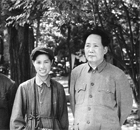Government and Policy
New method to track jobless urged
By Lan Tian (China Daily)
Updated: 2010-02-05 07:03
 |
Large Medium Small |
Survey-based system to record unemployment 'more accurate'
A leading expert on labor studies has called for the country's existing practice of tallying an urban unemployment rating system to be replaced by a statistical method based on surveys.
"The current system only reflects the general trend of joblessness in the country," Zhang Libin, a leading researcher with the Institute of Labor Science under the Ministry of Human Resources and Social Security, said in an interview yesterday.
Zhang's remarks followed those made by an unnamed senior official from the ministry and the National Bureau of Statistics (NBS), who said that China would implement the new survey-based approach to measure unemployment during the 12th Five-Year Plan (2011-15).
"We suggested introducing the method this year, but it was expected to be officially launched next year," the official was quoted by the 21st Century Business Herald on Wednesday as saying.
The nation has four major macro-economic control targets: gross domestic product (GDP), price of commodities, employment and balance of international payments. The registered urban unemployment rate is a key figure in the employment objective set annually, the report said.
China established the urban unemployment registration system in the 1980s. But jobless rural residents and many unemployed urban residents have not been registered under the system, causing many to doubt the accuracy of the official urban unemployment rate.
In 2008, the ministry reported that China's urban unemployment rate was up 0.2 percentage points to 4.2 percent, while a survey by the Chinese Academy of Social Sciences (CASS) showed that the rate was 9.4 percent, exceeding the international alarming level of 7 percent.
Ministry statistics also showed that the urban unemployment rate rose by 0.1 percentage points to 4.3 percent in 2009, with 9.21 million people being registered as unemployed.
"The CASS survey was based on just 2,000 samples. In fact, the ministry and NBS have been carrying out nationwide unemployment rating surveys for several years. We have the results of the surveys but just haven't released them yet," the unnamed official was quoted as saying.
The survey-based method will cover both the urban and rural populations, the official said.
A labor force survey system will also be set up in 31 big cities across the nation, which will report the supply and demand situation in these cities every month, Ma Jiantang, minister of the NBS, said at the bureau's annual meeting last month.
"In countries with mature market economies, GDP usually stays stable and therefore is not that important in terms of reflecting the ebb and flow of the macro-economy. In contrast, the unemployment rate is a more sensitive indicator that can reflect the macro-economy more scientifically," Zhang Libin said.
However, a press office official with the ministry who only gave his surname as Gong told China Daily yesterday: "We do not have any plans in the near future to launch a new unemployment rate system based on surveys."












